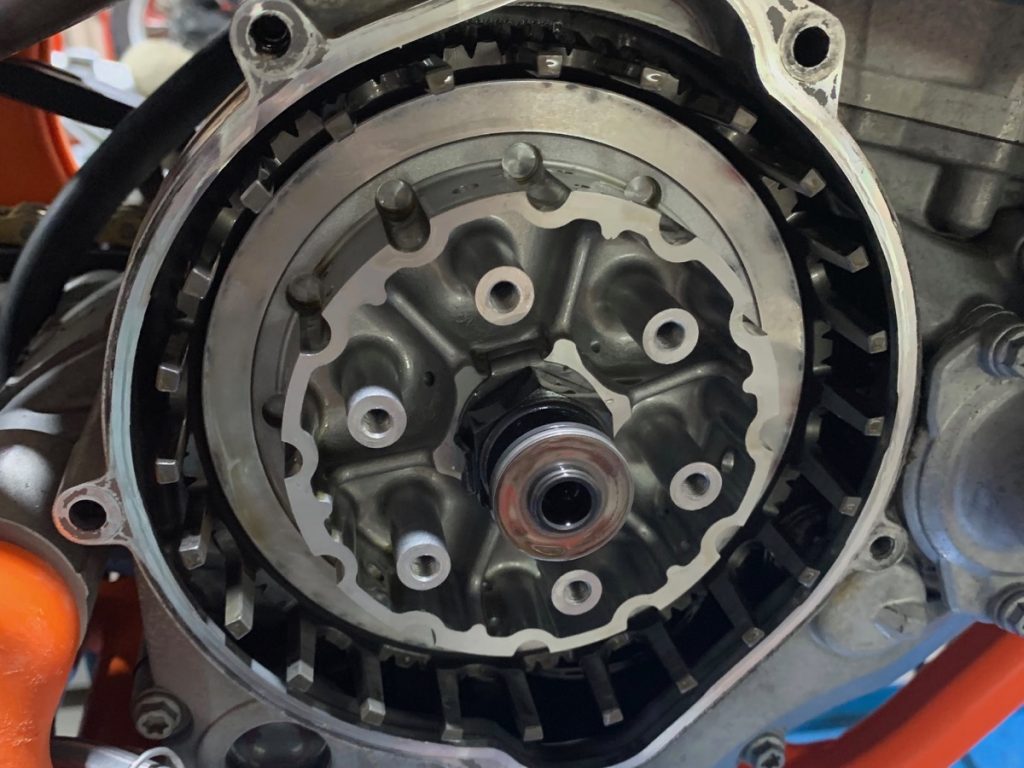Changing KTM clutch plates might seem like a simple job but if it’s done incorrectly then the life of the clutch could be significantly reduced or you could do hundreds of dollars’ worth of damage.
The main difference between a typical Japanese-manufactured clutch and an Austrian one, like a KTM clutch, is the metal pins that locate the steel plates on the clutch hub. A typical Japanese design does not have these pins and the steel plates locate on the hub directly. Let me show you the quickest and easiest way to change the plates.
BEWARE: If a clutch is assembled incorrectly then significant engine damage may occur. It can also result in a big loss in performance.
1 BIKE HOIST
Firstly I like to have the bike on a hoist so that it is nice and steady and I have good access to the oil drain plug and clutch cover. I also like the hoist because I can jack the bike up to a comfortable height to make working on the clutch much easier.

2 SOAK THE FIBRES
Take your new fibre clutch plates and soak them in a container of clean oil. I like to let them soak for a good hour. Soak them in the oil you will be using in the engine.
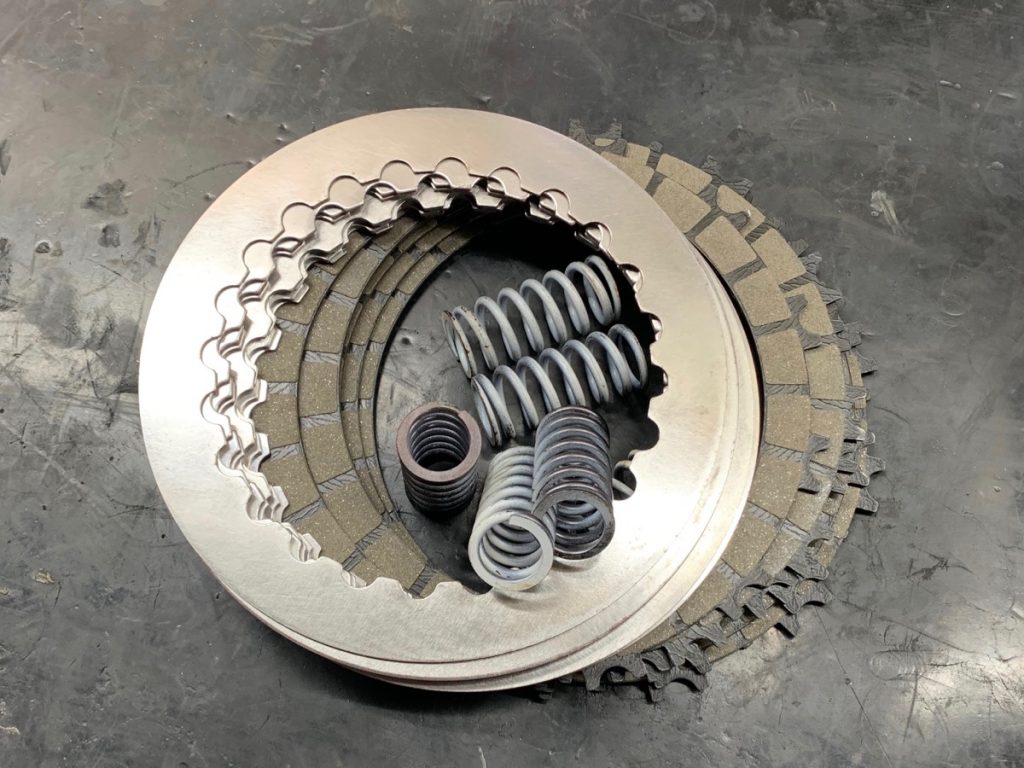
3 DRAIN OIL
Drain the old oil from the engine and then remove the old oil filter and oil screens. Discard the filter and clean the screens before refitting them using new O-rings. Refit the sump plug using a new washer and fit a new oil filter.

4 REMOVE COVER
Remove the KTM clutch cover by removing the 8mm hex-head bolts holding it in place. Some of these bolts are longer than the others so pay attention to where they came from. You can even lay them out in order or mark them to make refitting easier.
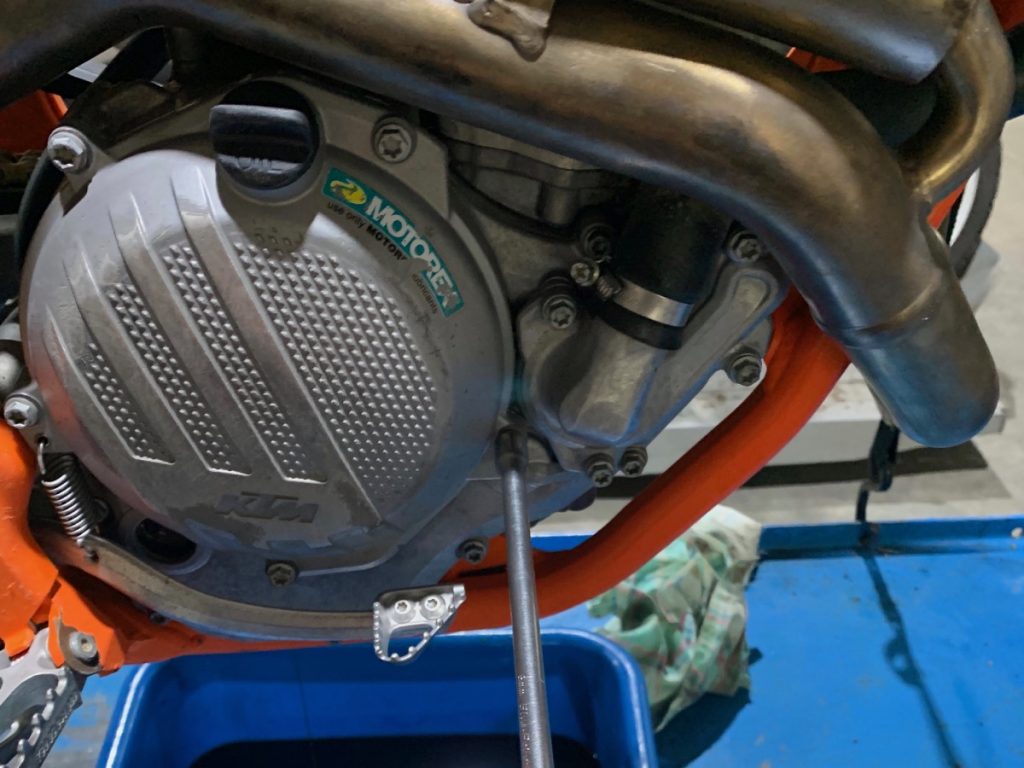
5 REMOVE SPRINGS
Remove the clutch springs by removing the 8mm hex-head bolts holding them in place. Inspect the bolts when you remove them and set them aside. You can discard the clutch springs as they will be replaced.
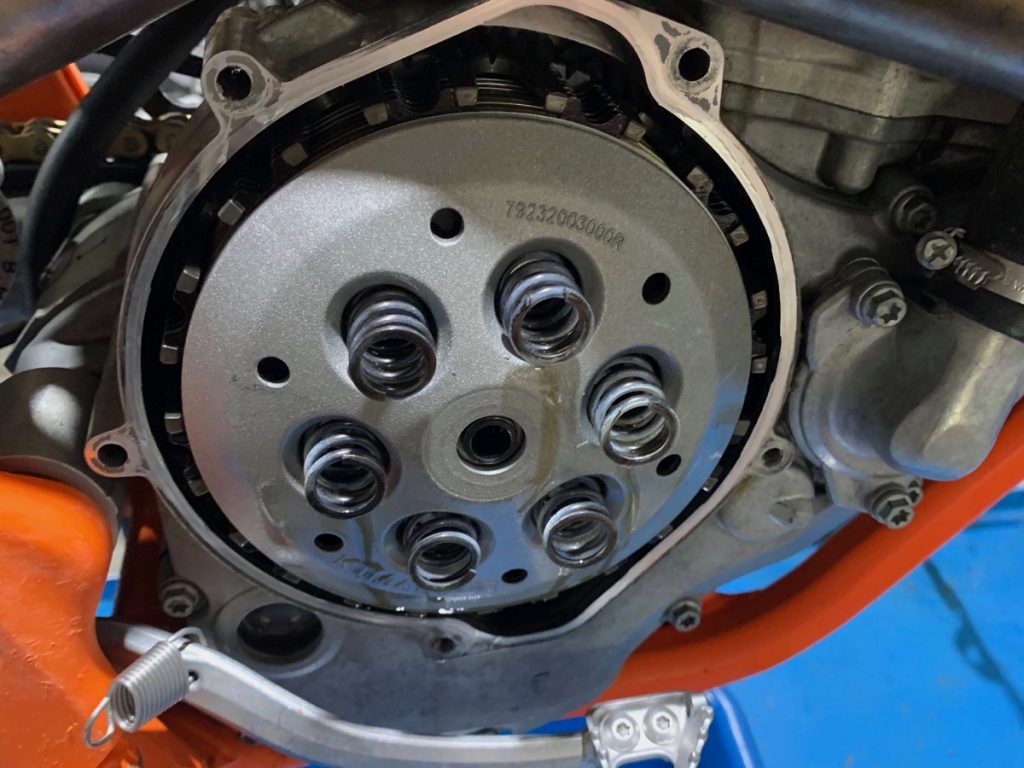
6 PULL PRESSURE PLATE
Remove the pressure plate by pulling it away from the clutch. Be careful not to lose the pushrod that sits on the inside of the pressure plate.
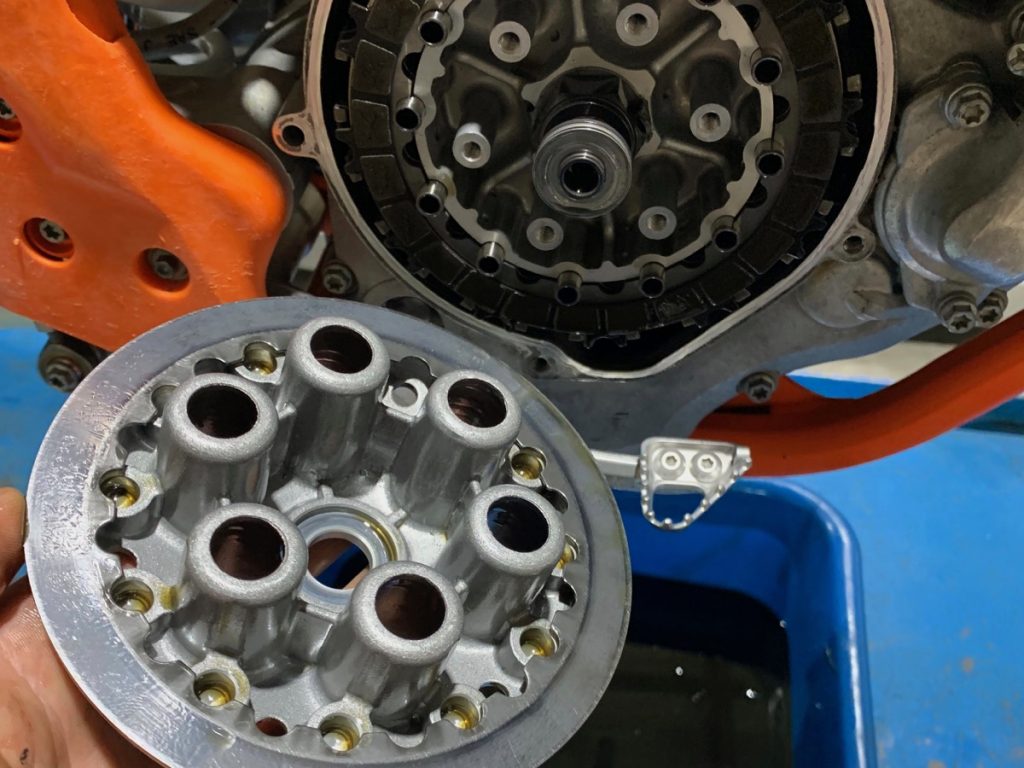
7 SLIDE PINS
Now that the pressure plate is off, you can see the steel pins that lock the plates to the inner clutch hub. Grab them with your fingers and slide them all out. Inspect them for damage and then set aside.
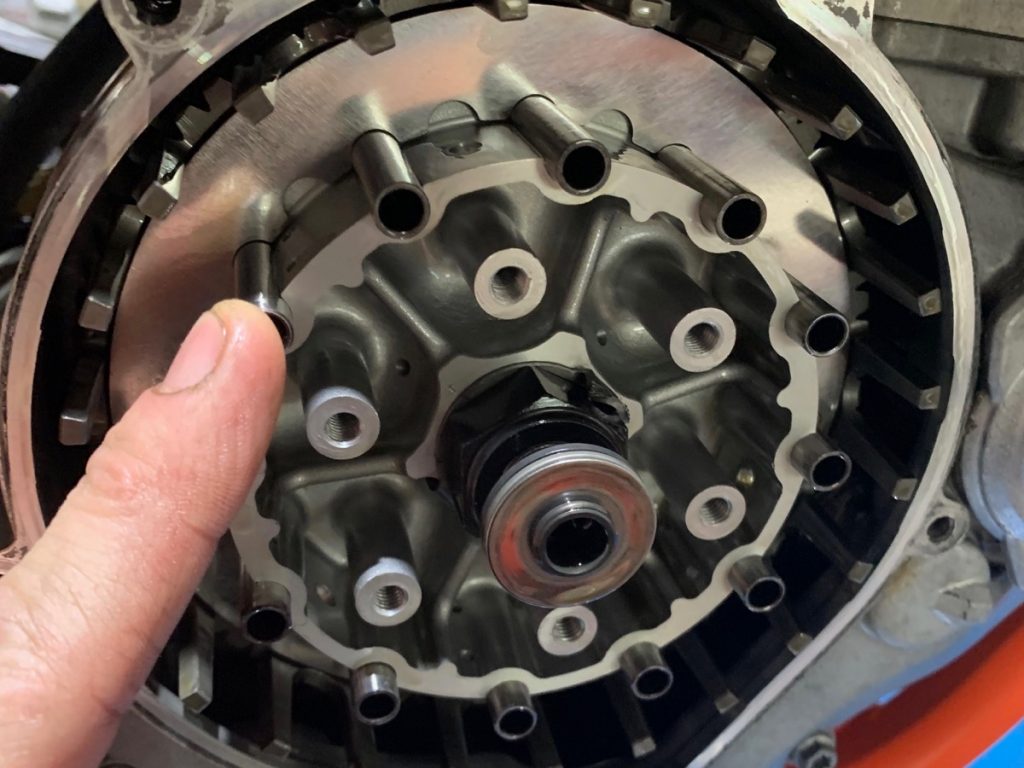
8 TOSS OLD PLATES
Now you can slide all the old plates out of the clutch basket hub and discard them.
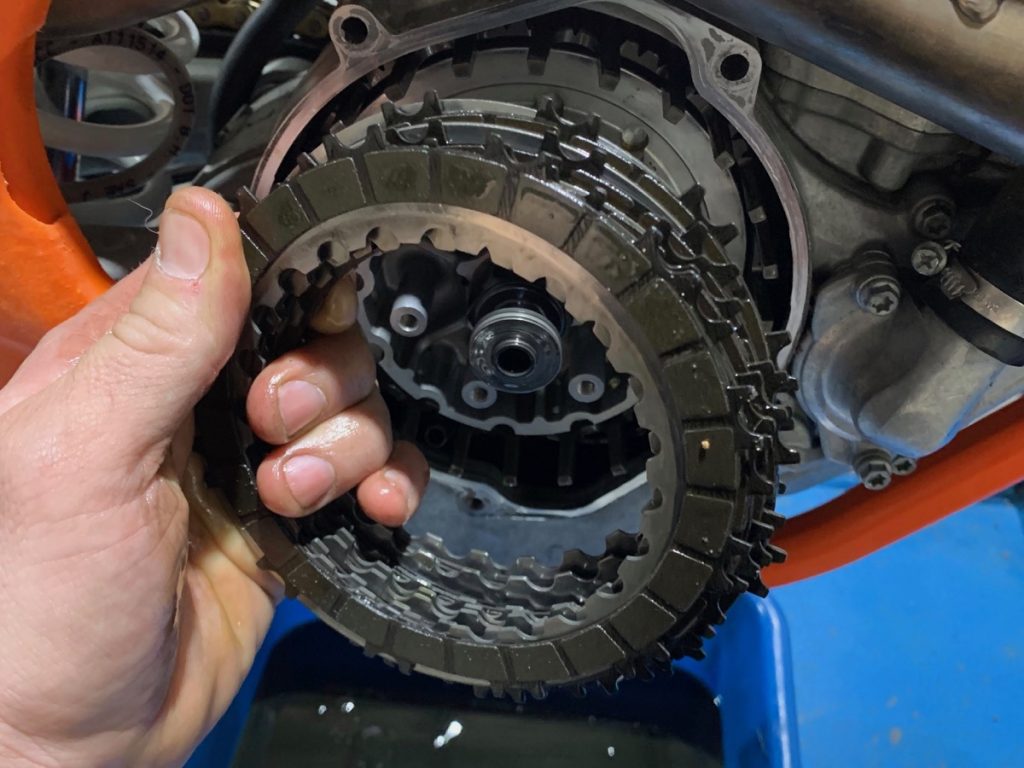
9 MORE STEEL
Take all the clutch pins and put them back into the holes in the clutch hub. Push them in firmly so they don’t fall out and then fit the first steel plate over the top of them to hold them securely in place. Unlike the Japanese manufacturers, the KTM clutch pack uses a steel plate on the inside of the pack and also on the outside so remember this when you are stacking the plates in order.
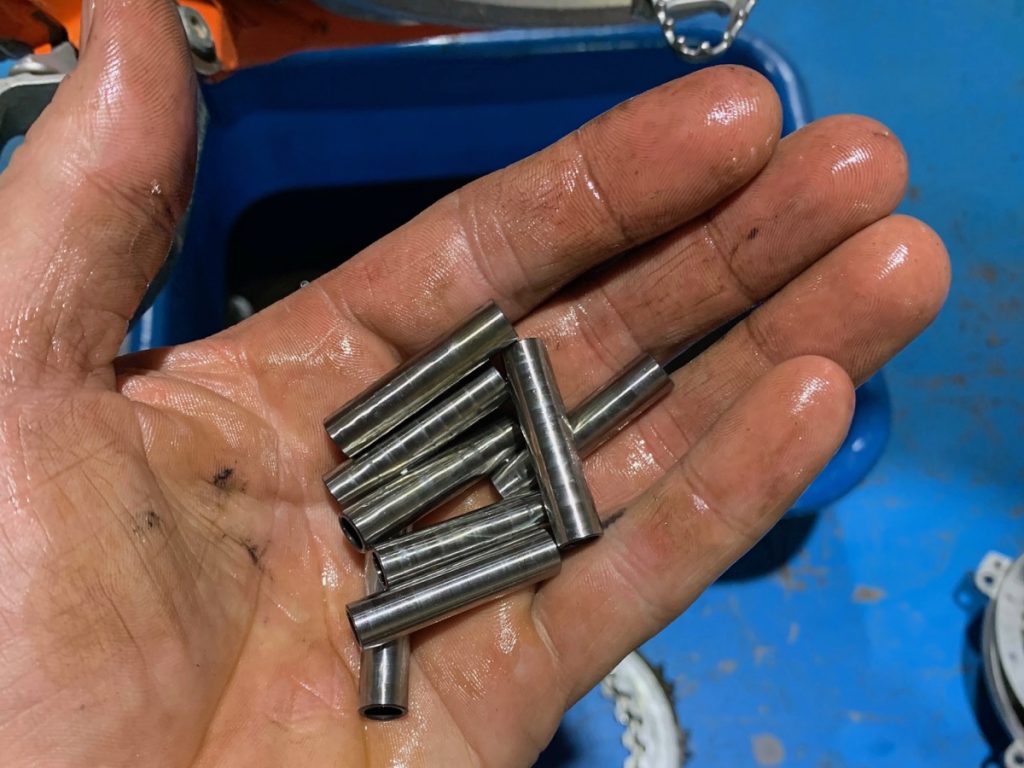
10 STACK THE PACK
Now that the first steel plate is in place, follow it up with a fibre plate, then another steel plate and so on until all the KTM clutch plates are stacked in order. The last plate should be a steel one. If it is not then you have the plates in the wrong order and you’ll need to remove them and start again.
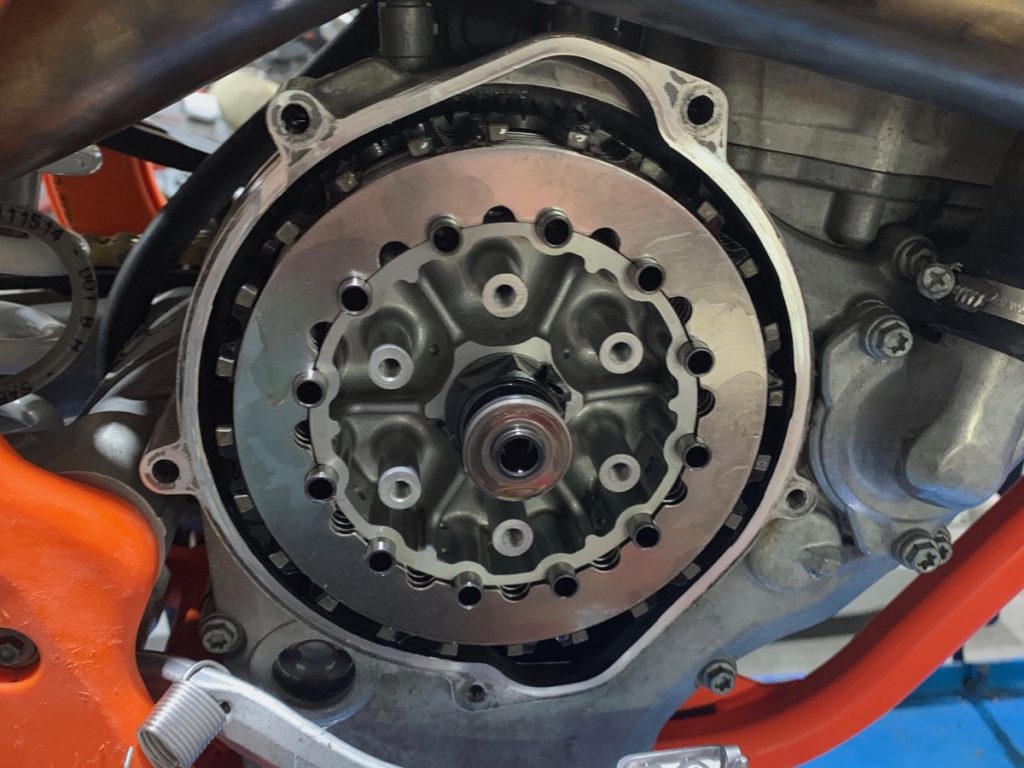
11 UNDER PRESSURE
Once all the plates are in, refit the pressure plate. Hold it in position with one hand while you fit the new springs and mounting bolts with the other. Be careful not to tighten these bolts more than the manufacturer’s specifications as they snap easily.
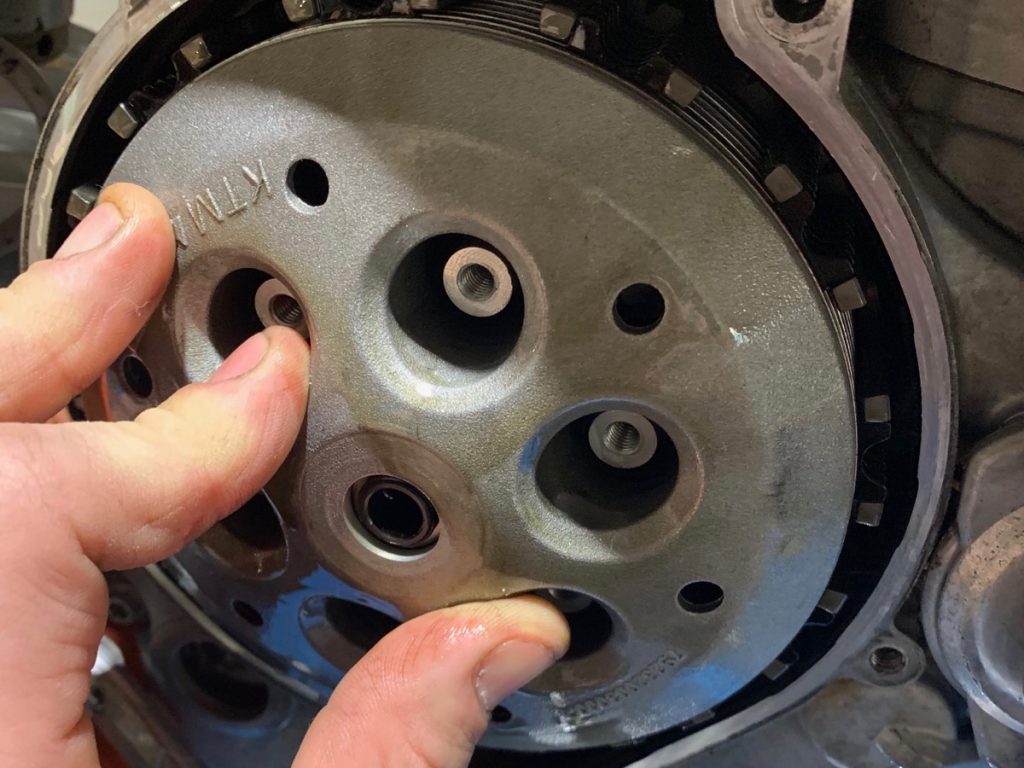
12 CHECK YOUR ACTION
Check that the clutch works freely by operating the lever. If everything feels correct then refit the cover, fill the engine with fresh oil and give it a good test run.

THE AUSTRIAN ANGLE
KTM is well known for using top-quality parts in their machines and doing things differently. The clutches are a good example. Kato uses top-quality plates that can stand up to some solid race abuse. The main differences compared with the Japs are:
CLUTCH BASKET
The basket is made from a solid piece of machined steel. Japanese manufacturers use an aluminium basket that is then riveted or bolted to a steel primary gear on the back of the basket. KTM’s gear is actually part of the steel basket, meaning the basket is much harder wearing and durable.
CLUTCH HUB
The hub that KTM uses has hardened chrome-steel fingers that hold the steel plates in position. This means that the steel plates do not vibrate directly on the basket and cause wear.
CLUTCH STACK
KTM clutch plates are stacked with a steel one on the inside and another on the outside, meaning that none of the friction plates rub directly against the aluminium clutch hub or pressure plate.
CLUTCH SPRINGS
Our charming model didn’t, but many KTMs use a DDS spring rather than coil springs. The DDS is a large, concave diaphragm-spring disc that compresses and applies the clamping force to the clutch pack. This style of spring is durable and provides a softer pull on the clutch lever.
Technical Editor Mat Boyd

